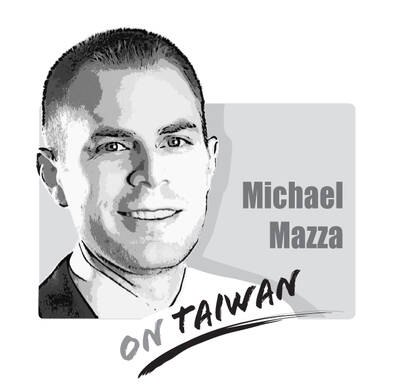Taiwan has had an impressive start after launching 5G services in July last year. The nation’s telecoms had accumulated more than 1 million subscribers as of the end of November, outpacing expectations.
With an average data transfer rate of 247.7 megabits per second (Mbps), Taiwan ranked third in offering ultra-high-speed 5G data transmission among 15 countries surveyed by OpenSignal, following only Saudi Arabia and South Korea.
Taiwan’s 5G data transmission speed is almost 7.2 times as fast as than 4G’s 34.5Mbps, the London-based research company said in a report last month.
However, the speedy migration to 5G technology has raised doubts among Taiwanese mobile subscribers. Those who are keeping their 4G plans say that the high-speed data transmission of 5G networks might come at the expense of their interests. Meanwhile, a growing number of subscribers are filing complaints with the National Communications Commission over poor Internet connections since the commercialization of 5G services.
Some have even accused telecoms of intentionally reducing 4G data transmission speeds to coax their subscribers into upgrading to 5G plans, citing intense competition and higher tariffs for 5G services.
Telecoms have denied the accusations.
Chunghwa Telecom has said that one reason could be that signals from users’ devices on its network are saturating the bandwidth.
The COVID-19 pandemic could be another factor, as more people are spending time on their mobile devices for work, study or entertainment.
Some suspect that 5G subscribers are occupying more bandwidth, as telecoms have installed non-standalone base stations that transmit 4G and 5G signals.
It sounds reasonable, and similar incidents happened in other countries during the early phase of their 5G deployment. South Korea, which in 2018 became the first country to offer 5G services, faces similar problems even now. Mobile users there last year experienced slower 4G data transmission speeds for the first time since the technology was launched.
Taiwanese telecoms have unveiled ambitious deployment plans to boost 5G coverage and availability this year. Far EasTone Telecommunications plans to double its number of 5G base stations to 8,000 from 4,000 last year, while Chughwa Telecom plans to expand its 5G base stations to 10,000 from 4,200.
However, the underlying problem is that telecoms should not only satisfy rapidly growing demand for 5G services, but also improve 4G performance.
Telecoms should install more standalone base stations to deal with rising demand for bandwidth during their next phase of 5G development, as such stations allow much faster data transmission and higher capacity.
Currently, 5G services are offered on non-standalone networks. Installing non-standalone base stations is a suitable way to swiftly deploy 5G networks and to increase availability in the initial phase of 5G development.
It is time for telecoms to take a different approach to satisfy voracious demand for high-speed and low-latency 5G networks, as the nation’s 5G subscribers could triple this year.
The commission should closely oversee 5G infrastructure construction and make sure that the interests of both 4G and 5G subscribers are protected.

Could Asia be on the verge of a new wave of nuclear proliferation? A look back at the early history of the North Atlantic Treaty Organization (NATO), which recently celebrated its 75th anniversary, illuminates some reasons for concern in the Indo-Pacific today. US Secretary of Defense Lloyd Austin recently described NATO as “the most powerful and successful alliance in history,” but the organization’s early years were not without challenges. At its inception, the signing of the North Atlantic Treaty marked a sea change in American strategic thinking. The United States had been intent on withdrawing from Europe in the years following
My wife and I spent the week in the interior of Taiwan where Shuyuan spent her childhood. In that town there is a street that functions as an open farmer’s market. Walk along that street, as Shuyuan did yesterday, and it is next to impossible to come home empty-handed. Some mangoes that looked vaguely like others we had seen around here ended up on our table. Shuyuan told how she had bought them from a little old farmer woman from the countryside who said the mangoes were from a very old tree she had on her property. The big surprise
The issue of China’s overcapacity has drawn greater global attention recently, with US Secretary of the Treasury Janet Yellen urging Beijing to address its excess production in key industries during her visit to China last week. Meanwhile in Brussels, European Commission President Ursula von der Leyen last week said that Europe must have a tough talk with China on its perceived overcapacity and unfair trade practices. The remarks by Yellen and Von der Leyen come as China’s economy is undergoing a painful transition. Beijing is trying to steer the world’s second-largest economy out of a COVID-19 slump, the property crisis and
As former president Ma Ying-jeou (馬英九) wrapped up his visit to the People’s Republic of China, he received his share of attention. Certainly, the trip must be seen within the full context of Ma’s life, that is, his eight-year presidency, the Sunflower movement and his failed Economic Cooperation Framework Agreement, as well as his eight years as Taipei mayor with its posturing, accusations of money laundering, and ups and downs. Through all that, basic questions stand out: “What drives Ma? What is his end game?” Having observed and commented on Ma for decades, it is all ironically reminiscent of former US president Harry